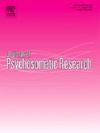比较功能性躯体综合征、应激相关综合征和健康对照患者的自主神经系统功能。
IF 3.5
2区 医学
Q2 PSYCHIATRY
引用次数: 0
摘要
背景:本研究的目的是通过测量心率(HR)、心率变异性(HRV)、皮肤电导水平(SCL)和外周皮肤温度(ST)来检测功能性躯体综合征(FSS;纤维肌痛和/或慢性疲劳综合征),压力相关综合征(SRS;过度劳累或倦怠)和健康控制(HC)。方法:对FSS患者(n = 26)、SRS患者(n = 59)和HC患者(n = 30)进行标准化的心理社会压力测试,包括静息期(120s)、STROOP颜色单词任务(120s)、心算任务(120s)和应激谈话(120s),各进行120s的恢复期。连续监测HR、HRV、SCL、ST。结论:我们的研究结果表明,与对照组相比,两组患者在休息时的平均HR和SCL更高,HRV更低(0.50),这表明自主神经系统功能障碍是应激相关和功能性躯体综合征的跨诊断特征。本文章由计算机程序翻译,如有差异,请以英文原文为准。
Comparing autonomic nervous system function in patients with functional somatic syndromes, stress-related syndromes and healthy controls
Background
The goal of this study was to examine autonomic nervous system function by measuring heart rate (HR), heart rate variability (HRV), skin conductance levels (SCL), and peripheral skin temperature (ST) in response to and during recovery from psychosocial stressors in patients with functional somatic syndromes (FSS; fibromyalgia and/or chronic fatigue syndrome), stress-related syndromes (SRS; overstrain or burn-out), and healthy controls (HC).
Methods
Patients with FSS (n = 26), patients with SRS (n = 59), and HC (n = 30) went through a standardized psychosocial stress test consisting of a resting phase (120 s), the STROOP color word task (120 s), a mental arithmetic task (120 s) and a stress talk (120 s), each followed by a 120 s recovery period. HR, HRV, SCL, and ST were monitored continuously.
Results
Average HR and SCL were higher, and HRV was lower, in both patient groups compared to HC during rest (0.50 < Cohen's d < 0.97). A larger SC response to psychosocial stress was found in FSS compared to HC (d = 0.71). However, HR increased less during psychosocial stress and showed a smaller reduction during recovery in both patient groups compared to HC (0.68 < d < 0.98). HRV was lower in both patient groups compared to HC during recovery (0.91 < d < 0.98). There were no differences in ST levels or responses between groups.
Conclusions
Our results indicate a dominance of the sympathetic nervous system in both patient groups compared to controls, suggesting that autonomic nervous system dysfunction is a transdiagnostic feature for stress-related and functional somatic syndromes.
求助全文
通过发布文献求助,成功后即可免费获取论文全文。
去求助
来源期刊
CiteScore
7.40
自引率
6.40%
发文量
314
审稿时长
6.2 weeks
期刊介绍:
The Journal of Psychosomatic Research is a multidisciplinary research journal covering all aspects of the relationships between psychology and medicine. The scope is broad and ranges from basic human biological and psychological research to evaluations of treatment and services. Papers will normally be concerned with illness or patients rather than studies of healthy populations. Studies concerning special populations, such as the elderly and children and adolescents, are welcome. In addition to peer-reviewed original papers, the journal publishes editorials, reviews, and other papers related to the journal''s aims.

 求助内容:
求助内容: 应助结果提醒方式:
应助结果提醒方式:


